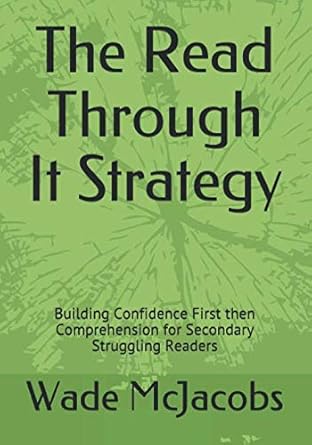Story of a Slow Reader
Despite learning to read before kindergarten, he found himself in a slow reading group by third grade. Frustrated and anxious throughout his career, he created the Read Through It Strategy for his students and it worked for him as well.
Read Here“Read Through It” Rather Than “Sound It Out”
Sounding out words for correct pronunciation is an important skill, but as students get older the habit of stopping to focus on a singular word can also be a distraction from the activity of comprehending the meaning of the passage. Frequently, the context of the paragraph assists in both comprehension and pronunciation of any particular troublesome word. After struggling with several words in the paragraph, Kathryn confidently declared, “I messed up, but I got it,” and she successfully completed the comprehension exercises. She read through the struggles and deciphered the meaning adequately to answer questions. The result was improved confidence in her reading skills. By changing the habit of Sounding It Out to Reading Through It, students can gain confidence in their comprehension. This new confidence can encourage them to explore the interesting nuances of particular words if they would like. At a minimum, however, they can be engaged as active participants in class rather than frustrated with oddities of the English language.
Read HereTeaching Moments/Learning Moments Are Empowerment Moments
When students become aware of the development of their skills then they also learn to appreciate their learning. They may even get excited about learning more, but we need to highlight these moments for them and for ourselves. This article reveals the path of five students who discovered that they could influence their learning. They were taught the simple skills in the Read Through It Strategy and were able to witness their growth. They became more confident as they felt empowered with their own skill development.
Read Here


